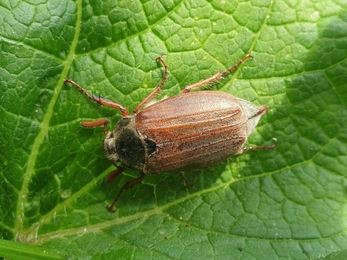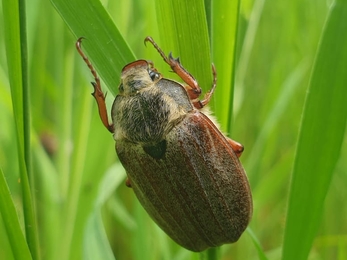Weekly wild news from our reserves - 11 June
Trooping crumble cap at Bradfield Woods - Alex Lack
A small finch of heathland, scrub and farmland, the linnet eats seeds and is named after one of its favourite foods: linseed, which is the seed of flax. In winter, they may form large flocks with other seed eaters, roaming the countryside and feeding on stubbles, saltmarshes and wasteland. Linnets build neat, bowl-shaped nests, often in gorse bushes or in hedgerows.
Unfortunately, like so many other farmland birds, linnets are declining rapidly, mainly due to agricultural intensification. We are working with local wildlife friendly farmers nearby to Hen Reedbeds and within the River Blyth catchment, to help farmland birds such as linnet and yellowhammer.
Greater bee-fly
This dark-edged bee-fly was snapped this week by Joe at Lackford Lakes. Also known as the 'large bee-fly', looks rather like a bumblebee, with a long, straight proboscis that it uses to feed on nectar from spring flowers, such as primroses and violets. It is on the wing in the early spring, when it can often be seen in sunny patches. In flight, it is even more like a bee as it produces a high-pitched buzz. This species of bee-fly is common, but the heath and mottled bee-flies are much rarer.
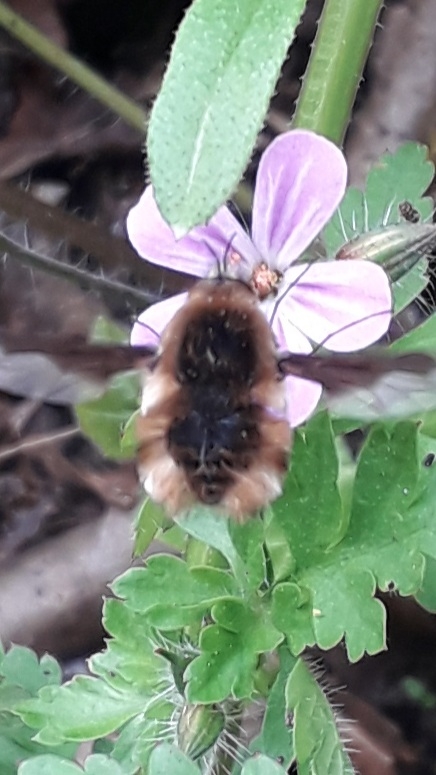
Greater bee-fly at Lackford Lakes - Joe Bell-Tye
Gorgeous Gunton Meadow
There are wildflowers galore at Gunton Meadow this week, with common spotted and bee orchids in flower along with yellow rattle. Yellow rattle is a valuable component of a meadow community as it parasitizes grasses, taking away their energy and in doing so, helps other wildflowers to compete within the sward.
Cream spot tiger moth
Will Cranstoun, West Area Sites Manager, recently came across this beautiful tiger moth at Lackford Lakes. Like the other tiger moths, this is a large colourful moth with bold markings. Its distinctive features are its black forewings with cream spots, yellow hindwings and a furry black thorax. When disturbed it will display its hindwings and its orange/red abdomen to warn off predators. The caterpillars feed on a range of herbaceous plants such as dead-nettles and dandelions. It spends most of the year as a larva, from July to late April or early May, before pupating in a cocoon amongst low vegetation. The adult moth then emerges after about 20 days.
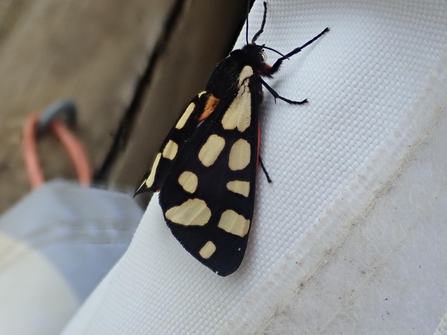
Cream spot tiger moth at Lackford Lakes – Will Cranstoun
Trooping crumble cap
This fungi rarely ventures forth alone or even with just a few friends; more often it forms dense masses swarming over rotting tree stumps and roots. These gregarious little fungi occur from early spring until the onset of winter, and they are at their most spectacular when the caps are young and pale - sometimes nearly pure white. It takes just two or three days for young white caps to turn grey and then begin blackening. Common in Britain and Ireland the trooping crumble cap is truly a cosmopolitan mushroom, being found also in most parts of the world. As its name suggests, it usually appears in very large trooping groups on stumps in woodland and occasionally in shaded hedgerows.
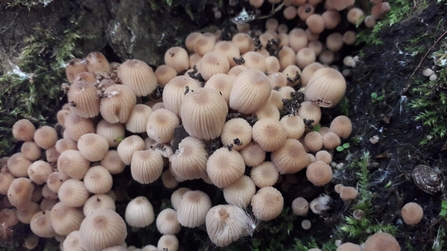
Trooping crumble cap at Bradfield Woods - Alex Lack
Cockchafer at Church Farm
The common cockchafer is the UK's largest scarab beetle (scarabs include dung beetles and chafers). With its rusty-brown wing cases, pointed 'tail' and fan-like antennae it is unmistakeable. It is a clumsy flier and makes a buzzing sound and can be seen swarming around streetlights in spring. They live underground as larvae for five years and emerge as adults often in large numbers.





